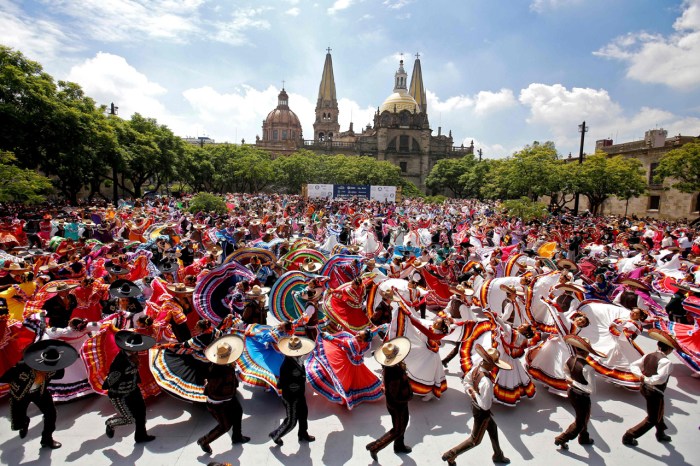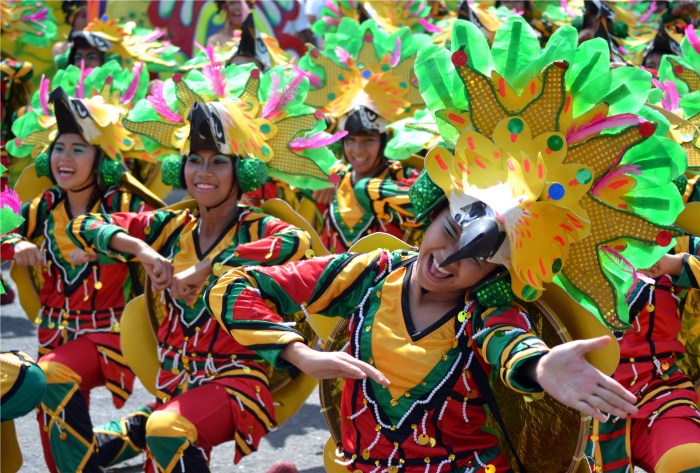
Music and dance cultural festivals bring together a vibrant tapestry of traditions, showcasing the rich significance of rhythm and movement in celebrating heritage and community spirit. As the beats resonate and the dancers move in harmony, these festivals create a symphony of cultural expression that transcends borders and unites people from all walks of life.
From the infectious energy of traditional dances to the soul-stirring melodies of ancient tunes, these festivals offer a glimpse into the heart and soul of different cultures, weaving a colorful tapestry of shared experiences and collective joy. As we delve into the world of music and dance cultural festivals, we embark on a journey that celebrates the essence of human connection through the universal language of music and movement.
Music and Dance Cultural Festivals

Music and dance play a crucial role in cultural festivals around the world, serving as powerful mediums to celebrate traditions, heritage, and community spirit.
Significance of Music and Dance in Cultural Festivals
Music and dance are essential components of cultural festivals, as they help to preserve and showcase the unique cultural identity of a community. Through rhythms, melodies, and movements, music and dance communicate stories, beliefs, and values that have been passed down through generations.
Celebrating Traditions and Heritage
During cultural festivals, music and dance are used to commemorate historical events, honor ancestors, and express cultural pride. Traditional songs and dances are performed to showcase the richness and diversity of a community’s heritage, allowing for the preservation and promotion of cultural traditions.
Role in Fostering Community Spirit
Music and dance have the power to bring people together, fostering a sense of unity and belonging within a community. Through collective participation in music and dance performances, individuals can strengthen social bonds, promote inclusivity, and create a shared sense of identity during cultural festivals.
Examples of Famous Music and Dance Cultural Festivals
Rio Carnival in Brazil
Known for its vibrant samba music and colorful dance parades, Rio Carnival is one of the largest and most famous music and dance festivals in the world.
Diwali Festival in India
Celebrated with traditional music and dance performances, Diwali is a festival of lights that showcases the rich cultural heritage of India.
Notting Hill Carnival in the UK
Featuring Caribbean music and dance, the Notting Hill Carnival is a multicultural celebration that highlights the diversity of London’s communities.
Holi Festival in Nepal and India
With lively music and dance events, Holi is a festival of colors that symbolizes the victory of good over evil and the arrival of spring.
Impact of Music and Dance on Cultural Festivals: Music And Dance Cultural Festivals
Music and dance play a crucial role in enhancing the overall experience of cultural festivals. They bring a sense of vibrancy, energy, and connection to the festivities, engaging attendees in a unique and immersive way.
Enhancing Cultural Diversity
Music and dance performances from different genres contribute significantly to the diversity of cultural festivals. Whether it’s traditional folk dances, contemporary music, or fusion performances, each genre showcases a distinct aspect of a culture, highlighting its rich heritage and traditions.
Influence on Tourism and Local Economies
The presence of music and dance performances at cultural festivals can attract a wide range of tourists, both domestic and international. This influx of visitors not only boosts the local economy through increased spending on accommodations, food, and souvenirs but also helps in promoting the cultural heritage of the region.
Preservation of Cultural Identity
Music and dance performances serve as a means of preserving and celebrating the cultural identity of communities during festivals. Through traditional songs, dances, and musical instruments, these performances keep alive the customs, beliefs, and stories that have been passed down through generations, helping to ensure that cultural heritage is not lost or forgotten.
Evolution of Music and Dance Cultural Festivals

Music and dance have always been integral parts of cultural festivals, dating back to ancient civilizations where rituals and celebrations were accompanied by rhythmic sounds and movements. These traditions laid the foundation for the vibrant music and dance performances we witness at cultural festivals today.
Historical Origins of Music and Dance in Cultural Festivals
Music and dance have been used throughout history to mark significant events, honor deities, and bring communities together. In ancient civilizations such as Mesopotamia, Egypt, Greece, and Rome, music and dance were essential elements of religious ceremonies, harvest festivals, and rites of passage. These early forms of music and dance set the stage for the rich tapestry of cultural expressions we see in festivals around the world today.
Evolution of Music and Dance Performances in Cultural Festivals
Over the years, music and dance performances in cultural festivals have evolved with changing social norms, technological advancements, and artistic innovations. Traditional folk dances and music styles have been preserved and passed down through generations, while new genres and fusion styles have emerged, blending different cultural influences to create unique performances. The use of modern instruments, lighting effects, and stage design has transformed the way music and dance are presented at festivals, enhancing the overall sensory experience for audiences.
Modern Adaptations and Innovations in Music and Dance at Cultural Festivals
In recent years, cultural festivals have embraced modern adaptations and innovations in music and dance to cater to diverse audiences and stay relevant in a rapidly changing world. Collaborations between artists from different cultural backgrounds, the incorporation of digital technologies in performances, and the exploration of unconventional venues have brought fresh perspectives to traditional art forms. These innovations have not only expanded the artistic boundaries of music and dance but also fostered cross-cultural exchanges and collaborations among artists.
Future Trends and Possibilities for Music and Dance in Cultural Festival Settings
Looking ahead, the future of music and dance in cultural festival settings holds exciting possibilities. With the rise of virtual reality, augmented reality, and interactive experiences, festivals may explore new ways to engage audiences and create immersive performances that transcend physical boundaries. Sustainability and inclusivity are also becoming key considerations, with festivals striving to minimize environmental impact and promote social diversity through their programming.
As technology continues to evolve and artistic boundaries blur, the future of music and dance in cultural festivals promises to be a dynamic and transformative journey.
INTEREST RATES

Interest rates play a crucial role in the financial world, influencing both borrowing and saving decisions. These rates represent the cost of borrowing money or the return on saving funds, affecting the overall economy in various ways.
Factors Influencing Fluctuations in Interest Rates
Interest rates in the economy are influenced by several key factors. These include:
- Economic Conditions: The overall health of the economy, including inflation rates, employment levels, and GDP growth, can impact interest rates.
- Central Bank Policies: Decisions made by central banks regarding monetary policy, such as adjusting the benchmark interest rate, can lead to changes in interest rates.
- Global Economic Trends: International factors, such as geopolitical events or trade agreements, can also influence interest rates in a country.
Fixed vs. Variable Interest Rates
When it comes to financial products like loans or savings accounts, individuals can choose between fixed and variable interest rates. Here’s a comparison:
- Fixed Interest Rates: These rates remain constant throughout the term of the loan or investment, providing predictability and stability in payments or returns.
- Variable Interest Rates: These rates can fluctuate based on changes in the market or economic conditions, offering the potential for lower initial rates but also the risk of increases in the future.
Role of Central Banks
Central banks, such as the Federal Reserve in the United States or the European Central Bank, play a crucial role in setting and regulating interest rates. They use monetary policy tools to achieve economic objectives, such as controlling inflation or stimulating economic growth, by adjusting interest rates accordingly.
In conclusion, music and dance cultural festivals serve as powerful conduits of cultural heritage, unity, and celebration. Through the harmonious blend of rhythm and tradition, these festivals not only entertain but also educate and inspire, leaving an indelible mark on both performers and spectators alike. As we continue to embrace the magic of music and dance in cultural festivals, we pave the way for a future filled with harmony, diversity, and boundless creativity.
Questions and Answers
What is the role of music and dance in cultural festivals?
Music and dance play a crucial role in cultural festivals by preserving traditions, celebrating heritage, and fostering community spirit.
How do music and dance impact tourism and local economies during festivals?
Music and dance performances attract tourists, boost local economies through increased spending, and promote cultural exchange.
What are some famous music and dance cultural festivals from around the world?
Some renowned music and dance cultural festivals include the Rio Carnival in Brazil, Oktoberfest in Germany, and the Gion Matsuri in Japan.





